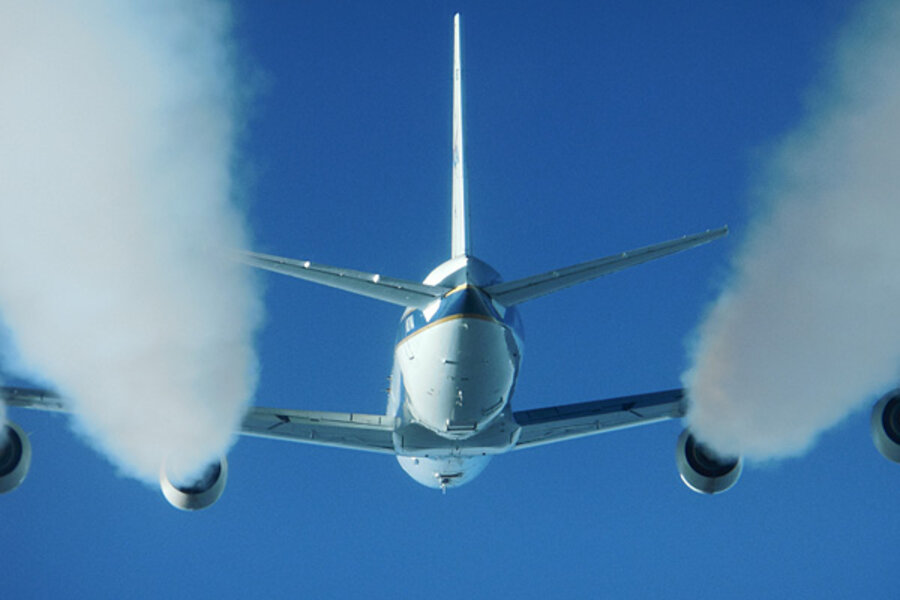Green flights? NASA explores biofuel use in planes.
Loading...
| Hampton, Va.
NASA researchers said Thursday that test flights conducted in California have shown a commercial jet could fly safely with a blend of jet fuel that includes a plant oil.
Scientists at NASA's Langley Research center in Hampton said there was no noticeable difference in the engine performance of a DC-8 aircraft flying as high as 39,000 feet on the biofuel mix made from the camelina plant oil. The researchers also said that under certain conditions the biofuel mix produced 30 percent fewer emissions than traditional aviation fuel.
"In terms of these fuels being acceptable for use in commercial aircraft, they're quite acceptable, but we're still digging into the data," said Bruce Anderson, a senior research scientist at Langley who worked on the project.
NASA is one of several government agencies examining the use of renewable biofuels to reduce dependency on foreign oil while reducing carbon emissions. Military officials are also pursuing the use of biofuels, with the Navy hoping to deploy a "Great Green Fleet" of ships and aircraft run entirely on alternative fuels in 2016.
Camelina, an oilseed crop that is native to northeastern Europe, can be cultivated in the United States and is considered well-suited to arid Northern Plains states because it needs little water and can handle low temperatures.
The research was conducted as a collaboration between Langley, Dryden, and NASA's Glenn Research Center in Cleveland. The biofuel mix tested by the experts allows a plane to be fueled just like any other aircraft, researchers said.
But Mr. Anderson noted one catch: Camelina oil is currently more expensive at about $18 a gallon, compared with about $4 a gallon for traditional jet fuel.
To examine the fuel's effects on the environment, researchers used the specially outfitted airplane to analyze the DC-8's contrails, coming as close as 300 feet to the aircraft while in flight.
The flights were made with a plane belonging to NASA's Dryden Flight Research Center. Each of the test flights occurred when weather conditions were optimal for contrails to occur and took place near Edwards Air Force Base in California between February and April.
Anderson said the emission reductions would be greater if the jet ran entirely on biofuel instead of a 50-50 blend, but doing so would require the jet to be altered.
Detailed results of the research are likely be made public in coming weeks and anxiously awaited by the aviation industry, which has expressed a desire to see more of the crop grown and refined as it looks to battle against uncertainty in oil prices.
Even more exhaustive tests are planned on biofuels for 2014.
NASA would like to conduct additional flight tests on other biofuels in the future, especially algae because it doesn't require fresh water to grow. But officials say they're limited in what they can do because the technologies and commercial applications are still developing.
"The diesel market drives this and the jet biofuel market is just not there yet. In some ways we'd like to explore more fuels, but we're limited to the extent of what's commercially available," said Richard Moore, a postdoctoral fellow at Langley.
Anderson said while there were small differences in emissions using the biofuel mix in flight, other research has shown that the fuels could have a greater environmental impact while jets are on the ground. Idling airplanes at busy airports contribute greatly to poor air quality, he said.





